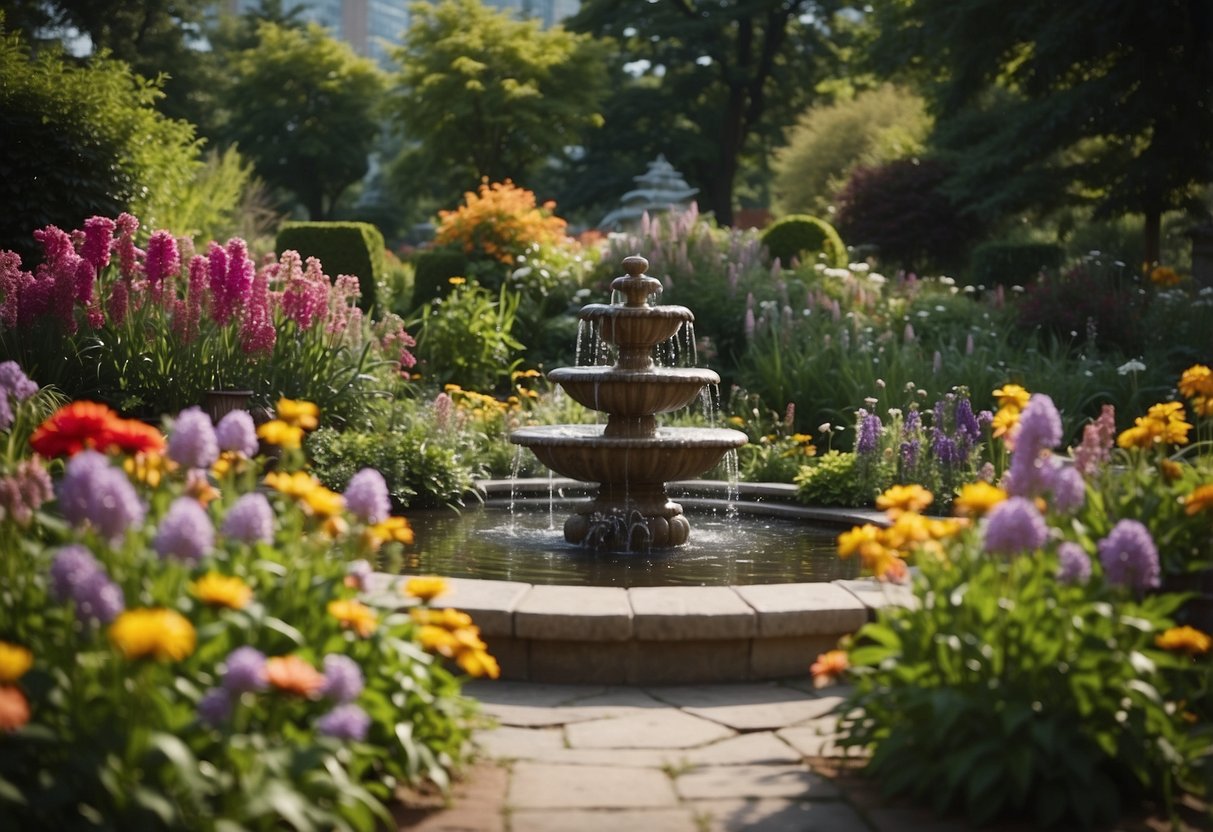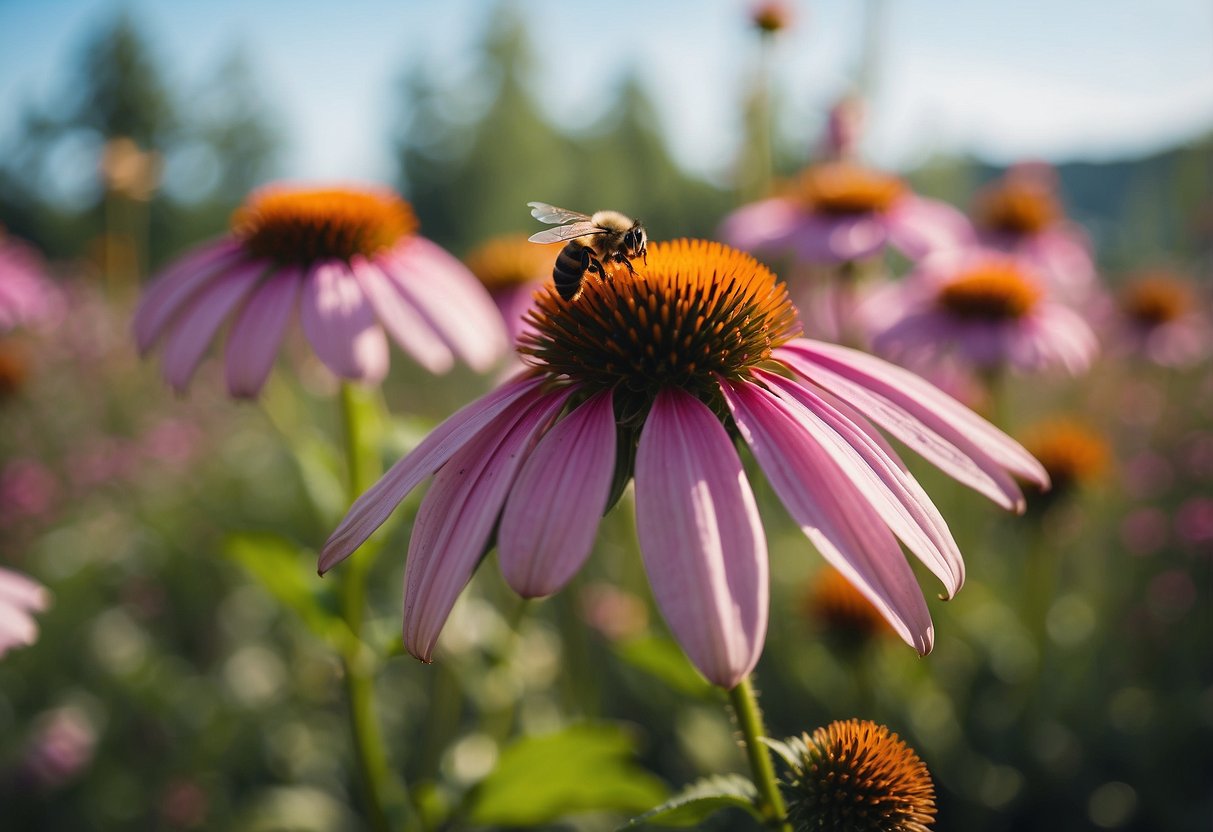Perennial Garden Ideas: Year-Round Beauty for Your Yard
Creating a beautiful and low-maintenance garden is easier than you might think. By planting perennials, you can enjoy vibrant colors and fragrant flowers year after year without the hassle of replanting each season.

Perennial gardens can transform your outdoor space into a lively and ever-blooming paradise. They offer a variety of textures, heights, and colors that can suit any garden style, from cottage to formal. Whether you’re a seasoned gardener or a beginner, perennials can make your gardening experience rewarding and enjoyable.
1) Lavender

Lavender is a popular choice for perennial gardens. Its silvery-green foliage and upright flower spikes add color and fragrance. Lavender can create stunning borders and informal hedges.
Plant lavender in the spring once the soil warms up. This plant prefers dry, hot, and sunny climates. Regular pruning helps maintain its compact, dense form. Consider varieties like Hidcote lavender, known for its dark purple-blue flowers and silvery-gray foliage.
Lavender mixes well with roses and other plants that enjoy similar growing conditions.
2) Black-eyed Susan

Black-eyed Susan is a fantastic choice for your perennial garden. These bright flowers have golden-yellow petals and a dark center. They really pop in any garden setup.
You can find both annual and perennial varieties. They are hardy in USDA Zones 3-11 and need little care to grow abundantly. They are perfect for mass plantings.
Black-eyed Susans also attract bumblebees, butterflies, and moths, making your garden a lively place. With their daisy-like appearance, they add a cheerful touch to any garden space.
For more details, check out this guide on how to grow Black-eyed Susan.
3) Daylilies

Daylilies are a fantastic addition to any perennial garden. They come in a variety of colors, including yellow, orange, red, and pink. Their blooms can last from mid-season to late in the year, providing a long-lasting splash of color.
Daylilies thrive in zones 3-10 and are known for their easy maintenance. They grow well in both sunny borders and container gardens. Try pairing them with other plants, such as hostas or coneflowers, to create a diverse and eye-catching display.
For more ideas on incorporating daylilies into your garden, check out this daylily-filled garden plan.
4) Pincushion Flower

Pincushion flowers, or Scabiosa, are charming additions to your garden. They feature beautiful blooms in shades of blue, pink, purple, and white. These plants grow to about 6 to 12 inches tall and spread 9 to 24 inches wide.
They flourish in full sunlight and well-draining soil. Water young plants regularly, and reduce watering as they mature. These flowers attract pollinators, making your garden lively and buzzing. For more information, visit Better Homes & Gardens.
5) Shasta Daisy

Shasta daisies are a charming addition to any garden. These perennials have white petals with bright yellow centers, making them a cheerful sight.
You can plant them in borders alongside other summer bloomers like dahlias, coneflowers, and zinnias. Shasta daisies can grow up to four feet tall and will attract butterflies to your garden.
To get started, plant nursery-grown Shasta daisies in spring after the danger of frost has passed. Dig a hole twice the diameter of the root ball, place the plant in, fill with soil, and water well.
For more detail on planting, visit How to Plant and Grow Shasta Daisy.
6) Russian Sage

Russian Sage is perfect for adding a touch of whimsy to your garden. Its silvery foliage and tall, lavender-blue flowers look great from summer to fall.
To plant, choose a sunny spot with well-drained soil. Space the plants 2-3 feet apart for the best air circulation and growth.
This plant thrives in hot, dry conditions and requires little water once established. A low-maintenance choice that rewards you with long-lasting blooms, it’s also loved by bees, butterflies, and hummingbirds.
For pruning, cut the woody stems back to about 6 inches in early spring. This helps promote new growth.
7) Coneflower

Coneflowers, or Echinacea, are a fantastic addition to your garden. These perennials are known for their easy care and vibrant blooms. They thrive in USDA zones 3-9 and bloom from summer into fall.
These flowers attract pollinators, adding a lively touch to your garden. They come in various colors, including pink, purple, yellow, and red. For more details on planting and growing coneflowers, check out this guide.
When planting, space them 1 to 3 feet apart. Water them well initially, and they will soon become a low-maintenance delight in your yard.
8) Hosta

Hostas are perfect for shady areas in your garden. They come in a variety of colors, shapes, and sizes, making them easy to mix and match. You can use them to create beautiful, lush landscapes.
These plants are low maintenance and very hardy. They pair well with other shade-loving plants like ferns and astilbes.
For a different look, consider planting hostas in containers. Place them on your patio or near your entryway to add a touch of green to your outdoor space. Hostas provide a lot of versatility and beauty to any garden.
9) Coral Bells

Coral Bells, also known as Heuchera, are a fantastic addition to any perennial garden. Their striking foliage comes in a variety of colors, including deep purple, green, and even silver.
They thrive in well-draining, humus-rich soil and can handle anything from full sun to partial shade. Just make sure the soil is not too wet.
These plants are admired for their bell-shaped flowers and attractive leaves. Coral Bells are also low-maintenance, making them perfect for both novice and experienced gardeners. Inject some vibrant, year-round color into your garden with Coral Bells!
10) Butterfly Weed

Butterfly Weed is a colorful perennial that attracts butterflies to your garden. Its bright orange flowers bloom continuously throughout the summer. The plant is drought-tolerant and deer-resistant, making it low maintenance.
You can plant it in full sun and well-drained soil. It grows in a variety of settings, including meadows and prairies. For more details on planting Butterfly Weed, visit this guide.
Benefits of Perennial Gardens

Perennial gardens offer numerous advantages. They require less maintenance, provide year-round beauty, and support the environment.
Low Maintenance and Cost-Effective
Perennial gardens are great because they need less work over time. Once you plant them, they come back year after year. This means you don’t have to buy new plants every season. This saves both money and effort.
Having a garden that maintains itself can be a significant relief. You won’t have to spend as much time weeding, watering, or replanting. This makes perennials a good choice if you have a busy schedule or limited gardening experience.
Seasonal Interest
Perennials can provide beauty throughout the year. They bloom in different seasons, offering a range of colors and textures. For instance, chrysanthemums and snapdragons flower in autumn, adding rich, warm hues to your garden.
Early bloomers like crocuses and tulips can give you a burst of color in spring. Mid-season flowers such as daylilies keep your garden vibrant through summer. Combining them ensures your garden always has something interesting to show.
Environmental Benefits
Perennial gardens are also beneficial for the environment. They often have deeper root systems, which help reduce soil erosion and improve soil health. Plants like coneflowers and sedums attract pollinators, which supports the ecosystem.
Additionally, perennials require less water once established. This can help conserve water, making your garden more sustainable. They also provide habitats for beneficial insects and wildlife, contributing to a healthier ecosystem.
Design Principles for Perennial Gardens

Designing a perennial garden involves selecting appropriate plants, considering color schemes and textures, and layering your garden to create visual interest and harmony. Each element plays a crucial role in achieving a beautiful and thriving garden.
Choosing the Right Plants
Select perennials that match your climate and soil conditions. Consider sunlight requirements: Some plants thrive in full sun, while others prefer shade. Make a list of plants that bloom in different seasons to ensure year-round interest.
Next, think about plant height and spread. Taller plants like Joe Pye Weed should go in the back, while shorter ones like coneflowers fit well in the front. Balance your choices with a mix of flowering periods and foliage types.
Including plants with various textures and shapes, such as hostas and hydrangeas, can add depth. Using native species can enhance ecological benefits, attracting local wildlife like pollinators.
Color Schemes and Textures
Color plays a significant role in garden appeal. Choose a color scheme that complements your surroundings. For example, cool colors like blues and purples can create a calming effect, while warm colors like reds and oranges add vibrancy.
Textures add another dimension. Combining plants with different leaf shapes and surface textures, like the smooth leaves of ferns and the coarse texture of sedums, adds interest. You can also use plants like Japanese maples for their striking foliage.
Consider creating contrast with masses of color. Planting large groups of the same color can make a striking visual impact. Make sure to plan for seasonal changes, such as the rich autumn colors from plants like heuchera.
Creating Garden Layers
Layering creates a visually appealing garden. Place taller plants at the back or center if it’s an island bed. Mid-sized plants go in front or around these, and shorter plants fill the edges or the front rows.
This technique not only looks good but also ensures each plant gets enough sunlight. Use layers to create pathways and focal points, guiding visitors’ eyes through the garden. Paths can be lined with low-growing plants like amsonia to define the garden space.
Variety in height and structure also helps with air circulation, reducing pest and disease problems. Regularly prune to maintain the shape and health of your layers.







